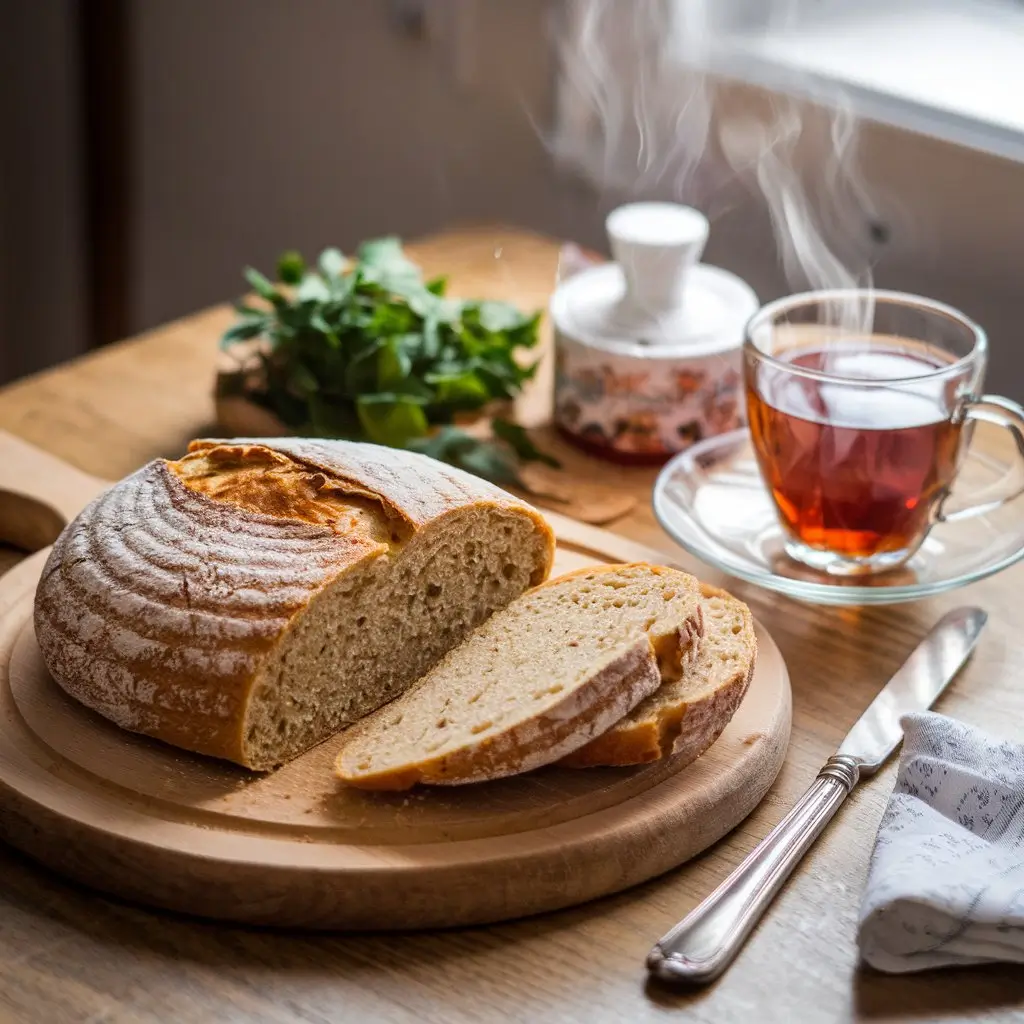When it comes to comfort food, few things rival the warmth of freshly baked bread in the morning. In particular, the traditional Lepinja breakfast recipe stands out as a soft, pillowy delight that originates from the heart of the Balkans. Indeed, it’s a timeless favorite cherished across generations, blending simplicity with rich cultural heritage.
As a matter of fact, Lepinja isn’t just another bread — it’s a culinary ritual. Whether you’re planning a cozy weekend breakfast or simply want to introduce something new to your kitchen, this recipe offers a perfect opportunity to explore Balkan flavors. What’s more, you don’t need to be a seasoned baker to master it. With a few basic ingredients and some patience, you’ll soon be pulling warm, golden rounds from your oven.
In this blog, you’ll learn how to make Lepinja step-by-step and discover variations, serving ideas, and expert baking tips to help you get it just right. Above all, this is about bringing joy to your breakfast table — one bite at a time.
What is Lepinja?
To begin with, Lepinja (pronounced LEH-peen-yah) is a traditional flatbread that hails from the heart of the Balkans — especially Serbia, Bosnia, and Croatia. Often referred to as Balkan pita, this beloved bread is known for its round shape, slightly crispy exterior, and soft, airy interior. Historically speaking, Lepinja has been baked in wood-fired ovens for centuries and served during both everyday meals and festive family gatherings.
In other words, it’s a bread with soul.
What makes it special, compared to other flatbreads, is its subtle tang and the way it perfectly balances chewiness and fluff. Typically, Lepinja is split open and filled with meats like ćevapi, slathered with kaymak (a creamy dairy spread), or enjoyed on its own with butter or jam.
Moreover, its humble list of ingredients — just flour, yeast, water, and salt — makes it a go-to staple in many Balkan households. Because of this simplicity, it’s easily adaptable for modern kitchens around the world.
Why Lepinja is Perfect for Breakfast?
First and foremost, breakfast should be warm, nourishing, and comforting — and Lepinja ticks all these boxes effortlessly. Due to its soft texture and neutral flavor, it pairs well with both sweet and savory toppings. For instance, spread it with honey and butter for a simple start, or stuff it with scrambled eggs and cheese for a more filling meal.
Additionally, Lepinja is quick to make compared to many yeasted breads. Thanks to its short proofing time, you can have fresh, homemade bread ready in just a couple of hours. Consequently, it becomes a practical choice for those slow, cozy mornings or even busy weekdays.
Another reason to love it is its versatility. Not only does it work with Balkan breakfast staples like ajvar and cured meats, but also with globally loved ingredients like avocado, hummus, or smoked salmon. As a result, it appeals to diverse taste preferences and dietary needs.
Beyond flavor and convenience, making Lepinja at home allows you to control what goes into your food — no preservatives, no additives, just honest, wholesome ingredients. Therefore, it’s a healthier alternative to store-bought breads.
All things considered, Lepinja is more than just a breakfast bread — it’s a comforting ritual, a culinary journey, and a warm invitation to start your day with intention and flavor.
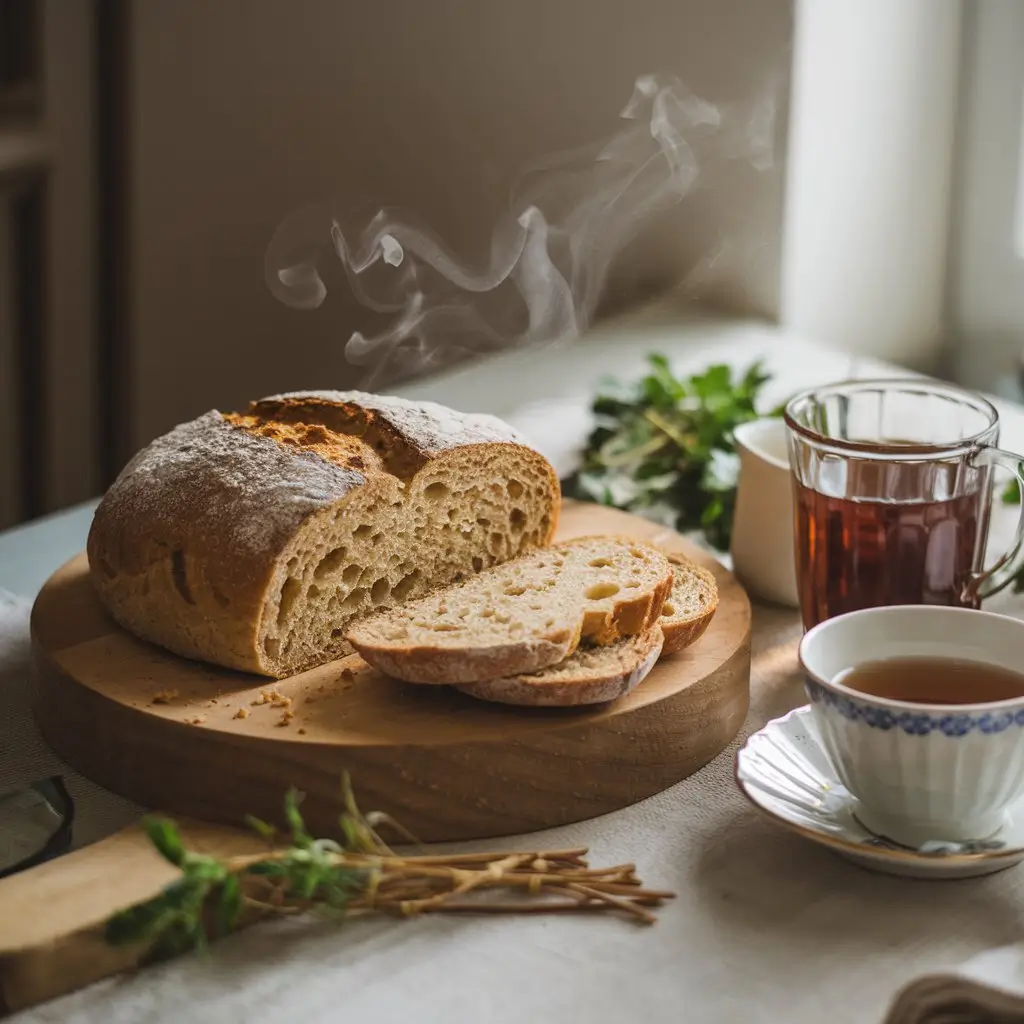
Ingredients for Traditional Lepinja
Before you begin, make sure your pantry is stocked with the following ingredients. Together, they form the base of this wonderfully rustic bread.
| Ingredient | Quantity | Notes |
|---|---|---|
| All-purpose flour | 3 cups (360g) | Unbleached is best for texture |
| Warm water | 1¼ cups (300ml) | Not hot – around 110°F (43°C) |
| Instant dry yeast | 1 packet (7g) | Or 2¼ teaspoons |
| Sugar | 1 teaspoon | Helps activate the yeast |
| Salt | 1 teaspoon | Balances the flavor |
| Yogurt (optional) | 2 tablespoons | Adds softness and a slight tang |
| Olive oil | 2 tablespoons | For richness and moisture |
Pro tip: You can substitute yogurt with sour cream or skip it altogether — it’s flexible!
Step-by-Step Instructions for Making Traditional Lepinja
Now that you have everything ready, let’s dive into the baking process. Each step is simple, yet important for creating that perfect Lepinja texture and flavor. Follow these instructions carefully, and you’ll be rewarded with the smell of freshly baked bread wafting through your kitchen.
1: Activate the Yeast for Lepinja
The first step involves using a large mixing container to add tepid water. Add the sugar and yeast. Then, stir gently and let it sit for 5–10 minutes.
In the meantime, you’ll notice bubbles forming on the surface — this means your yeast is active and alive. If it doesn’t foam, your yeast may be expired, and you should try again with a fresh packet.
2: Mix the Dough for Lepinja
Once the yeast is bubbly, add the yogurt (if using) and olive oil. Stir to combine. After that, begin adding your flour gradually, mixing in about half first, then the salt, and then the remaining flour.
As you mix, a shaggy dough will start to form — slightly sticky, but manageable.
3: Knead the Dough for Lepinja
Next, transfer the dough to a floured surface. Knead it for about 8–10 minutes. Use the heel of your hand to stretch and fold the dough repeatedly.
Meanwhile, if the dough sticks too much, sprinkle it lightly with flour — but avoid over-flouring, as this can make the Lepinja dense.
4: Let it Rise (First Proofing)
After kneading, shape the dough into a ball and place it in a lightly oiled bowl. Place a clean plastic sheet or kitchen towel over the mixture to cover. Then, let it rest in a warm spot for about 1 to 1½ hours, or until it doubles in size.
During this time, the yeast works its magic, developing flavor and structure.
5: Divide and Shape the Dough
After the dough rises you must gently press it to remove atmospheric bubbles. Transfer it to your work surface and divide it into 4 equal portions.
Then, shape each piece into a smooth ball and flatten slightly into a round disc about ½ inch thick. At this point, don’t worry about perfection — rustic is beautiful!
6: Second Proofing
Now, place the shaped rounds on a parchment-lined baking tray. Cover them loosely with a cloth and let them rest for another 20–30 minutes.
Meanwhile, preheat your oven to 475°F (245°C) with a baking stone or upside-down tray inside. By doing so, you’re creating a hot surface for instant oven spring — that beautiful puff of the dough once it hits the heat.
7: Bake the Lepinja
Just before baking, lightly mist the top of each dough round with water or brush with olive oil for extra browning.
Carefully, transfer the dough onto the hot baking surface using a peel or the parchment paper itself. Bake for 7–10 minutes, rotating halfway for even coloring.
When done, your Lepinja should be golden on top and slightly puffed, with a light, airy interior.
8: Cool and Serve
Finally, remove the Lepinja from the oven and place it on a wire rack to cool slightly. Although tempting, avoid slicing immediately — give it 5–10 minutes to rest so the crumb sets properly.
Afterward, slice, stuff, or slather as you like — the Lepinja is now ready to shine.
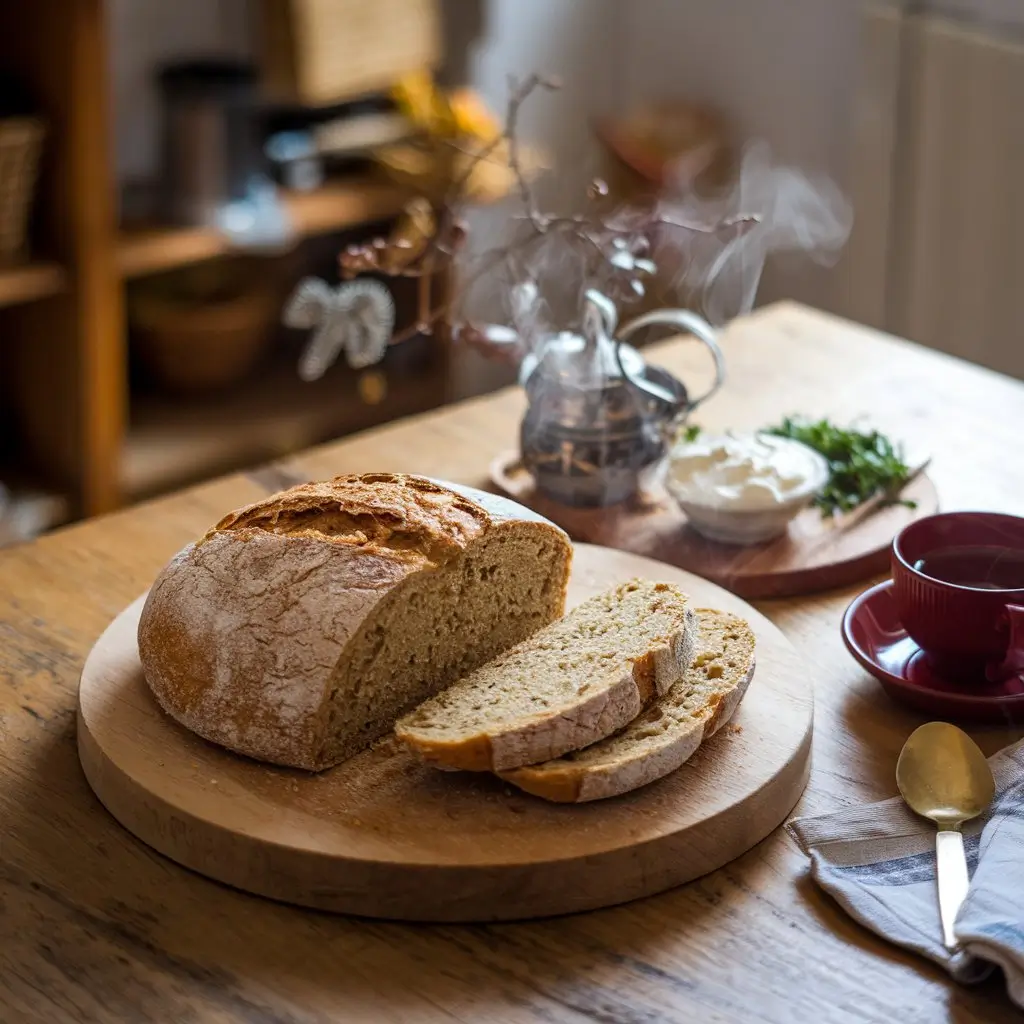
Tips for the Best Lepinja
Making Lepinja at home can be simple, but achieving bakery-level perfection? That takes a few extra tricks. Fortunately, with a bit of practice and these expert-approved tips, your bread will be soft, flavorful, and irresistibly good every single time. So, if you’re ready to elevate your baking game, keep these strategies in mind.
Use Bread Flour — or Enrich Your All-Purpose
While you can use all-purpose flour, switching to bread flour or blending the two improves chewiness and structure. Because bread flour has a higher protein content, it helps develop stronger gluten — giving your Lepinja a better rise and a delightfully elastic texture.
Don’t Rush the Rise
Above all, patience is key. Even though it’s tempting to speed things up, allow the dough to rise slowly and fully. In fact, if you have time, let it proof in the fridge overnight — this extended fermentation enhances both texture and flavor dramatically.
Keep the Dough Sticky (But Not Too Wet)
Most beginner bakers add too much flour out of fear of stickiness. However, a slightly sticky dough is what makes Lepinja so airy and soft. Instead of flouring excessively, use oiled hands and surfaces to manage stickiness without compromising hydration.
Use Steam in the Oven
For a crisp yet tender crust, add moisture to your baking environment. For example, place a pan of hot water in the bottom of the oven or spray the oven walls just before baking. Consequently, the steam delays crust formation and lets the bread rise beautifully.
Preheat the Oven and Your Baking Surface Thoroughly
Oftentimes, home bakers forget this crucial step. To mimic the effect of traditional wood-fired ovens, preheat your oven — along with your baking stone or tray — for at least 30 minutes. This ensures your Lepinja hits a searing hot surface, promoting better puff and color.
Avoid Overbaking
It’s important to remember that Lepinja is meant to stay soft, not crusty. Therefore, keep an eye on it in the last few minutes of baking. Once it’s golden and puffed, remove it immediately. If you wait too long, the crust can harden and lose that signature tenderness.
Let it Cool Slightly Before Slicing
Naturally, you’ll want to tear into that fresh, warm bread. However, letting Lepinja cool for 5–10 minutes allows the interior to set properly. As a result, the crumb stays fluffy and doesn’t collapse when cut.
Enhance with Flavor Additions
Depending on your preferences, don’t be afraid to personalize your Lepinja. For instance, sprinkle sesame seeds on top, mix in minced garlic, or add a handful of chopped herbs to the dough. Little changes like these can turn a classic into your signature version.
Make it a Family Affair
Above all else, baking is meant to be joyful. Invite your kids or family members to shape the dough, try new toppings, or experiment with fillings. By doing so, you’ll create not just food, but memories too.
Tools You’ll Need
- Large mixing bowl
- Dough scraper or wooden spoon
- Clean kitchen towel
- Oven or pizza stone
- Baking tray (if no stone)
- Rolling pin (optional)
No fancy mixer required — your hands are your best tools here.
Serving Suggestions
Pair your Lepinja with:
- Soft cheeses like feta or kaymak
- Scrambled or fried eggs
- Butter and homemade jam
- Grilled sausage or ćevapi
- Fresh herbs and a drizzle of olive oil
Each combo brings out a new dimension of this rustic bread.
Variations: From Serbia to Your Kitchen
In Bosnia, it’s often thinner and crispier; in Croatia, it might include milk. Add sesame seeds, whole wheat flour, or herbs like rosemary to make it yours.
Make it Vegan
Swap yogurt with coconut yogurt or more water. Olive oil can stay. Voila — vegan Lepinja!
Gluten-Free Lepinja Tips
Substitute with a 1:1 gluten-free flour blend, but add a binding agent like psyllium husk or xanthan gum. Expect a denser, chewier texture.
Add-Ins to Try
- Chopped olives or sun-dried tomatoes
- Caraway or nigella seeds on top
- Grated cheese kneaded into the dough
Common Mistakes to Avoid
- Over-kneading leads to toughness
- Under-proofing results in dense bread
- Skipping the preheated stone can ruin the texture
Storing and Reheating
Wrap cooled Lepinja in a cloth or store in a bread box. Reheat at 350°F for 5 minutes or toast lightly for crunch.
Batch Cooking for Busy Mornings
Make a double batch. Par-bake some, freeze, and reheat fresh every morning.
Lepinja with Kids
Let them roll and shape the dough. Add smiley faces with olives or herbs — breakfast turns into bonding time.
Your First Bite: What to Expect
Expect warmth. Softness. A subtle tang from yogurt. A crust that whispers, not crunches. The kind of bread you don’t need toppings for — but they sure make it better.
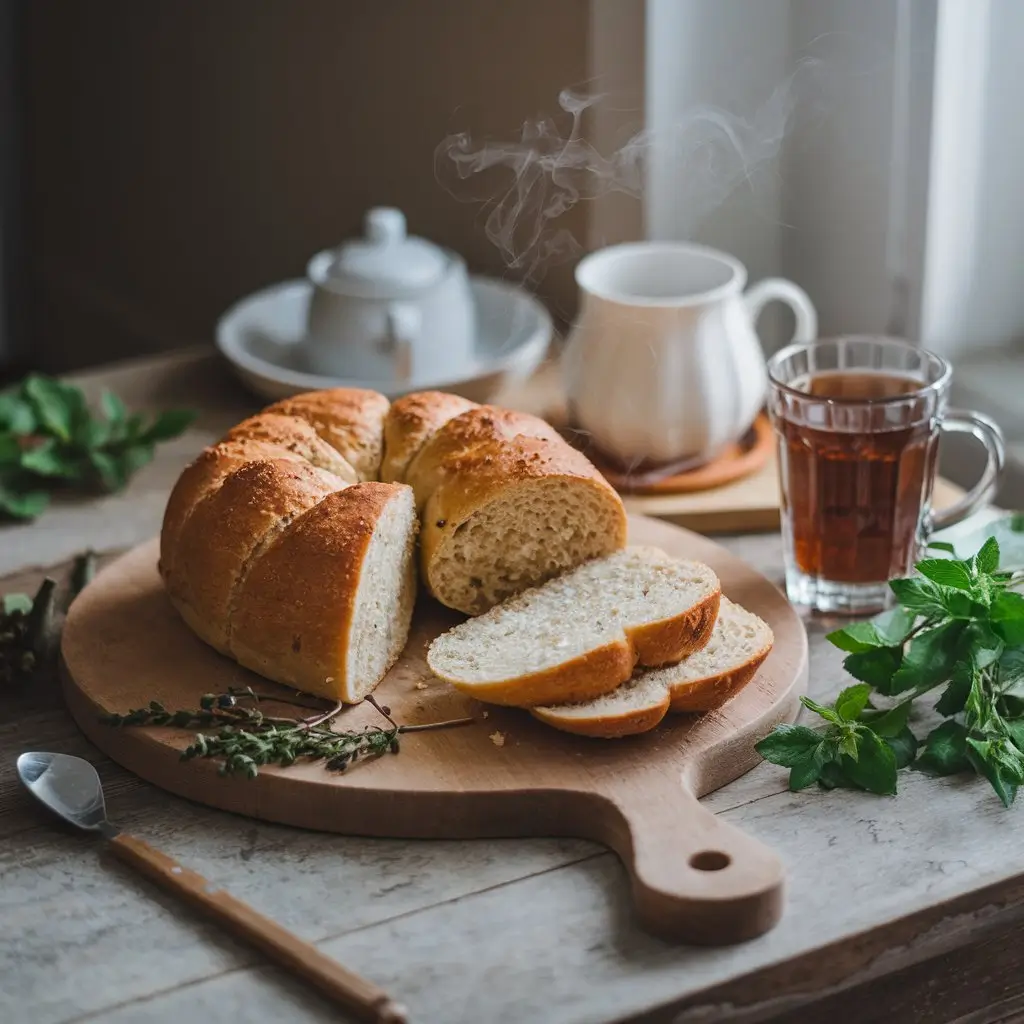
A Bite of the Past: The History of Lepinja
To truly appreciate Lepinja, one must journey back through time — to the traditional kitchens and bustling markets of the Balkans. Historically speaking, Lepinja has been a culinary cornerstone in countries like Serbia, Bosnia and Herzegovina, and Croatia, where bread isn’t merely food — it’s a daily ritual.
In the beginning, Lepinja was a peasant’s bread, made from basic pantry staples: flour, water, salt, and a touch of leavening. Over time, as baking methods evolved, so did the bread. What was once baked on open hearths or under cast iron domes known as sač, slowly transitioned to stone ovens and now modern home ovens.
Interestingly, its name, “Lepinja,” comes from the Slavic root word lep, meaning “nice” or “pleasant” — an apt name for something so simple, yet so deeply satisfying. Moreover, the bread became widely recognized not just for its taste, but for its ability to bring people together — whether at breakfast tables or family feasts.
By the mid-20th century, Lepinja had become closely associated with iconic Balkan dishes like ćevapi (grilled minced meat) and pljeskavica (a regional burger). Because of this association, it was no longer just a breakfast bread but a national staple — served throughout the day.
Additionally, the spread of Balkan communities around the world helped popularize Lepinja far beyond its homeland. As a result, today you can find it in international food festivals, fusion restaurants, and increasingly, in home kitchens from New York to Melbourne.
All things considered, Lepinja’s history is not just about flour and yeast — it’s about resilience, tradition, and the comfort of home. Even now, every bite tells a story — one of survival, celebration, and soulful simplicity.
More Breakfast Recipes to Try
If you love this Lepinja recipe, you’ll want to try more Breakfast recipes that are just as easy and delicious! Here are a few must-try options:
- 5 Simple Traditional Balkan-Style
- Irresistible Brownie Sundae
- Oreo Mug Cake Recipe
- Delicious Smoothie Bowl Recipe
FAQs
Yes, use baking powder or sourdough starter, but expect a denser result.
Absolutely. Use a heavy skillet, no oil, and cook for 3–4 mins per side over medium heat.
Gently poke it — if the dent springs back slowly, it’s ready.
Yes, but mix with white flour (50/50) for a lighter texture.
Yes, but with slight modern tweaks for convenience and global kitchens.
Scrambled eggs, feta, tomato, and a touch of arugula — perfection.
Conclusion: Bringing a Piece of the Balkans to Your Morning Table
Traditional Lepinja is more than bread. It’s warmth, simplicity, and heritage rolled into one irresistible loaf. With this recipe, you’re not just baking — you’re traveling, connecting, and nourishing. So, what are you waiting for? Roll up those sleeves and bake the breakfast of your dreams.
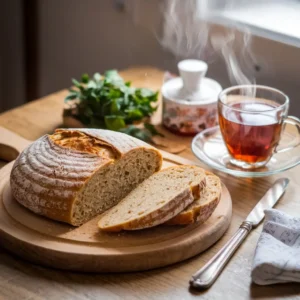
8-Step Traditional Lepinja Recipe for a Cozy Breakfast
Equipment
- Large Mixing Bowl
- Measuring Cups and Spoons
- Dough scraper or wooden spoon
- Kitchen towel or plastic wrap
- Oven (preheated to 475°F / 245°C)
- Pizza stone or inverted baking tray
- Parchment paper (optional)
- Wire rack for cooling
Ingredients
- 3 cups All-purpose flour
- 1¼ cups Warm water
- 1 packet Instant yeast
- 1 tsp Sugar, Salt
- 2 tbsp Yogurt
- 2 tbsp Olive oil
Instructions
- Activate yeast: Mix yeast, warm water, and sugar. Let sit until foamy.
- Mix dough: Stir in yogurt and olive oil. Gradually add flour and salt.
- Knead: On a floured surface, knead 8–10 minutes until elastic.
- First rise: Cover and let rise in a warm place until doubled (1–1½ hrs).
- Shape: Divide dough into 4 balls and flatten slightly.
- Second proof: Let rest 20–30 minutes while preheating oven.
- Bake: Bake on hot stone at 475°F for 7–10 minutes until golden and puffed.
- Cool & serve: Let rest 5 minutes before slicing or stuffing.
